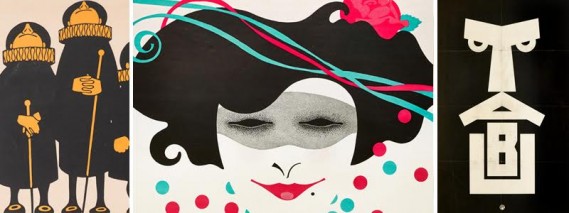 Starting this fall, The Wolfsonian–Florida International University calls attention to the transformative designs of one of history’s leading graphic artists in Julius Klinger: Posters for a Modern Age (October 6, 2017–April 1, 2018). The exhibition will outline the development of the Austrian designer’s career through over 100 posters, prints, drawings, and book illustrations from The Wolfsonian’s collection and beyond—commissions that reveal Klinger’s knack for infusing beautiful imagery with wit and an astute marketing sensibility. Their display in Miami Beach will mark the first U.S. solo exhibition devoted to the designer, and a unique opportunity for visitors outside of Europe to experience so much of his work in one place.
Starting this fall, The Wolfsonian–Florida International University calls attention to the transformative designs of one of history’s leading graphic artists in Julius Klinger: Posters for a Modern Age (October 6, 2017–April 1, 2018). The exhibition will outline the development of the Austrian designer’s career through over 100 posters, prints, drawings, and book illustrations from The Wolfsonian’s collection and beyond—commissions that reveal Klinger’s knack for infusing beautiful imagery with wit and an astute marketing sensibility. Their display in Miami Beach will mark the first U.S. solo exhibition devoted to the designer, and a unique opportunity for visitors outside of Europe to experience so much of his work in one place.
“Julius Klinger was a designer whose work resonates today for its charm, flair, humor, and variety,” said Jeremy Aynsley, exhibition curator and professor of design history at the University of Brighton. “He was an outstanding draughtsman who captured the elegance of the times in his posters, yet also made strongly satirical images that engaged with the issues of the day.”
Klinger (1876–1942) was born near Vienna to a Jewish family and established his reputation as a prominent graphic artist, illustrator, typographer, and prolific writer closely associated with the Vienna Secession art movement and Jugendstil, the German derivation of Art Nouveau. Working in Austria, Germany, and briefly the United States, Klinger helped create or modernize the image and identities of countless clients ranging from theaters and cabarets, art manufacturers, and commercial companies to public agencies over the course of three decades. He died at an extermination camp near Minsk after the Nazis’ annexation of Austria during the Second World War.
Central to Julius Klinger will be the strong, striking graphic elements that became his signature style and reflect his direct approach to communication: bold color; minimalist, clear visuals stripped of unnecessary detail; and linear compositions influenced by Japanese prints and calligraphy. Klinger distinguished commercial art, serving a client’s goals and messages, from fine art, which he argued prioritized self-expression—a trajectory that paved the way for the emergence of graphic design, or “Reklamekunst” (advertising art), as a specialized field.
Designs on view at The Wolfsonian include:
- A poster for Die Lustige Blätter [The Funny Pages], a leading satirical magazine, that features fishing centaurs in a fantasy scene (1909);
- A poster for Hollerbaum und Schmidt (1910), in which Klinger amusingly advertised the Berlin printer’s services through his own self-portrait;
- A poster for Münchener Faschings-Redoute [Munich Carnival Ball], designed for the city’s carnival season (1914);
- A poster for TABU (1919) that showcases Klinger’s skill in using graphic line to define the identity for the cigarette-paper company;
- A poster for RAVAG, Austria’s first radio network, which Klinger promotes through the motif of abstracted radio masts (1924);
- Intricate illustrations for Die Aegyptische Helene [The Egyptian Helena], a book based on Richard Strauss’ opera (c. 1928); and
- An announcement for a ten-week course on advanced poster design led by Klinger at The New School, New York, proudly proclaiming him “Europe’s most prominent poster artist” (1932).
“The art of persuasion is a key interest of The Wolfsonian, and Klinger was a master,” said Wolfsonian director Tim Rodgers. “Through his instrumental graphic work, our visitors will consider the power of design in affecting change, often by using tactics still employed by advertisers, corporations, and brand influencers today.”
In tandem with Julius Klinger, The Wolfsonian will publish a companion book with an essay by Aynsley and translated extracts from Klinger’s writings.
The Wolfsonian is located at 1001 Washington Avenue, Miami Beach, FL. Admission is $10 for adults; $5 for seniors, students, and children age 6–12; and free for Wolfsonian members, State University System of Florida staff and students with ID, and children under six. The museum is open Monday, Tuesday, Thursday, and Saturday, 10am–6pm; Friday, 10am–9pm; Sunday, noon–6pm; and is closed on Wednesday. Contact us at 305.531.1001 or visit us online at wolfsonian.org for further information.